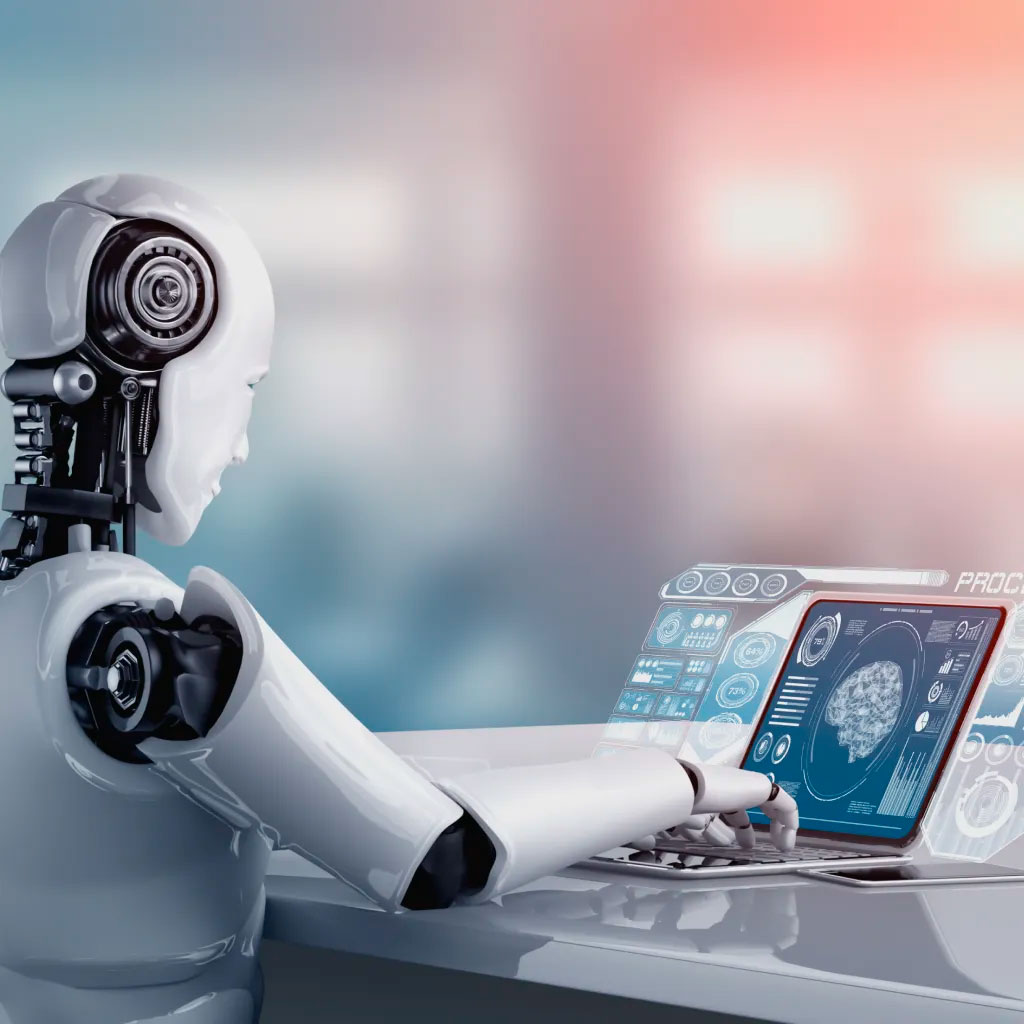What is AI & Machine Learning?
Artificial Intelligence (AI) and Machine Learning (ML) are technologies that enable computers to perform tasks that typically require human intelligence, such as recognizing patterns, making decisions, and improving over time through experience.
While AI refers to the broader concept of machines simulating human like intelligence, Machine Learning is a subset of AI focused specifically on systems that learn from data and improve their performance without being explicitly programmed.
How Does Machine Learning Work?
Machine Learning algorithms analyze data, identify patterns, and use this information to make predictions or decisions. The more data the system processes, the better it becomes at recognizing patterns and making accurate predictions, leading to continuous improvement over time.
Key Benefits of AI & Machine Learning
Automation & Efficiency
AI and ML automate repetitive tasks, saving time and reducing human error. This increases efficiency in industries ranging from manufacturing to customer service.Data-Driven Insights
AI and ML can analyze vast amounts of data to uncover hidden insights, helping businesses make more informed decisions and improve operations.Personalization
AI-driven systems can personalize customer experiences, such as product recommendations or tailored marketing campaigns, based on individual preferences and behaviors.Predictive Capabilities
By analyzing historical data, AI and ML can forecast future trends, allowing companies to anticipate customer needs, predict maintenance issues, or optimize supply chains.Continuous Improvement
Machine learning models become more accurate over time as they process more data, meaning the systems continually refine and optimize their performance.
The Future of AI & Machine Learning
AI and Machine Learning are revolutionizing industries by enabling smarter, more efficient operations. As technology evolves, we can expect even more advanced applications, from predictive analytics to autonomous systems, creating new opportunities and challenges across sectors.

There are three main types of Machine Learning:
Supervised Learning
The model is trained on labeled data (where the outcome is known). It learns to map input data to the correct output, making it ideal for applications like spam detection or image recognition.Unsupervised Learning
The model works with unlabeled data, identifying patterns and structures on its own. It's often used for clustering or anomaly detection, like customer segmentation or fraud detection.Reinforcement Learning
The system learns through trial and error, receiving feedback based on its actions. This approach is commonly used in robotics, gaming, and autonomous systems.
Common Use Cases in Industries
- Healthcare: AI-powered tools assist in diagnosing diseases, predicting patient outcomes, and personalizing treatment plans.
- Finance: Machine learning algorithms detect fraud, optimize trading strategies, and provide financial forecasts.
- Retail: AI personalizes shopping experiences, improves inventory management, and enhances customer service with chatbots.
- Autonomous Vehicles: AI and ML are used to help self-driving cars navigate, detect obstacles, and make real-time decisions.
- Customer Support: AI chatbots and virtual assistants automate customer service, improving response times and efficiency.
